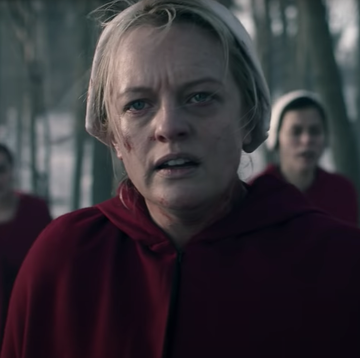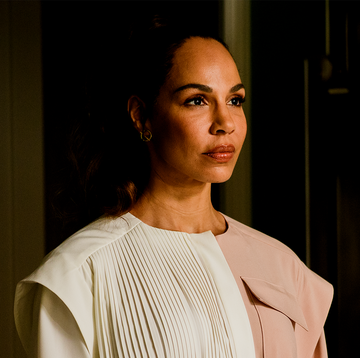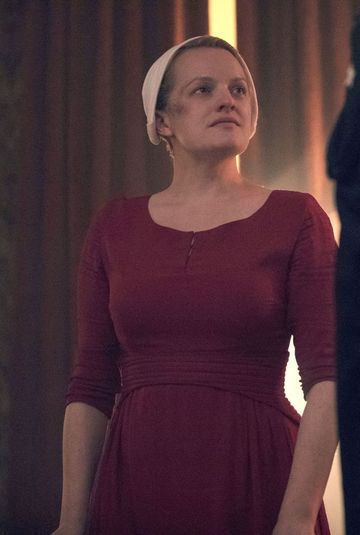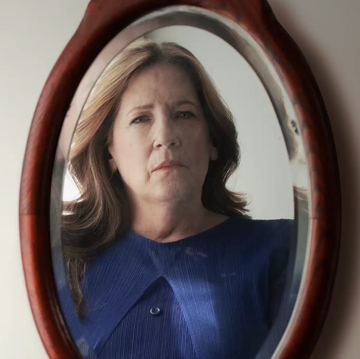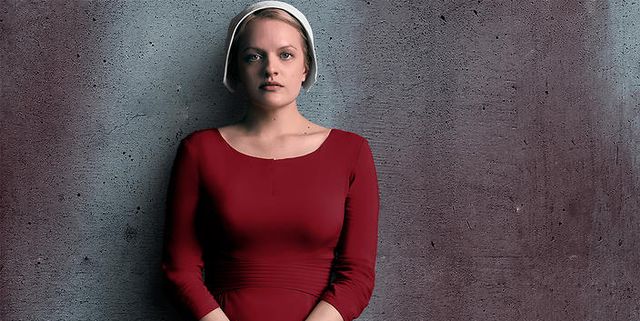
Every product on this page was chosen by a Harper's BAZAAR editor. We may earn commission on some of the items you choose to buy.
The Handmaid's Tale is currently airing its devastating second season, but you can take a breather from the heartbreak with all the trivia you need to know about the Emmy-winning Hulu hit.
Margaret Atwood made a cameo in Season 1.
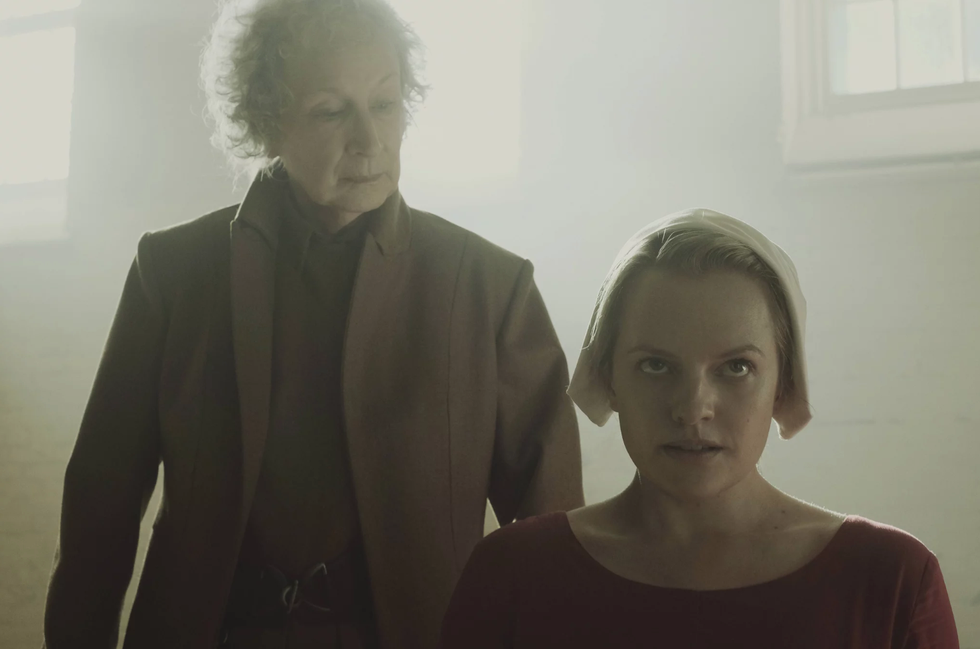
Margaret Atwood, the author of the book on which The Handmaid's Tale is based, made a small cameo in the show's pilot as the Aunt who slaps Offred. Buy the book
All the horrible things are based in fact.
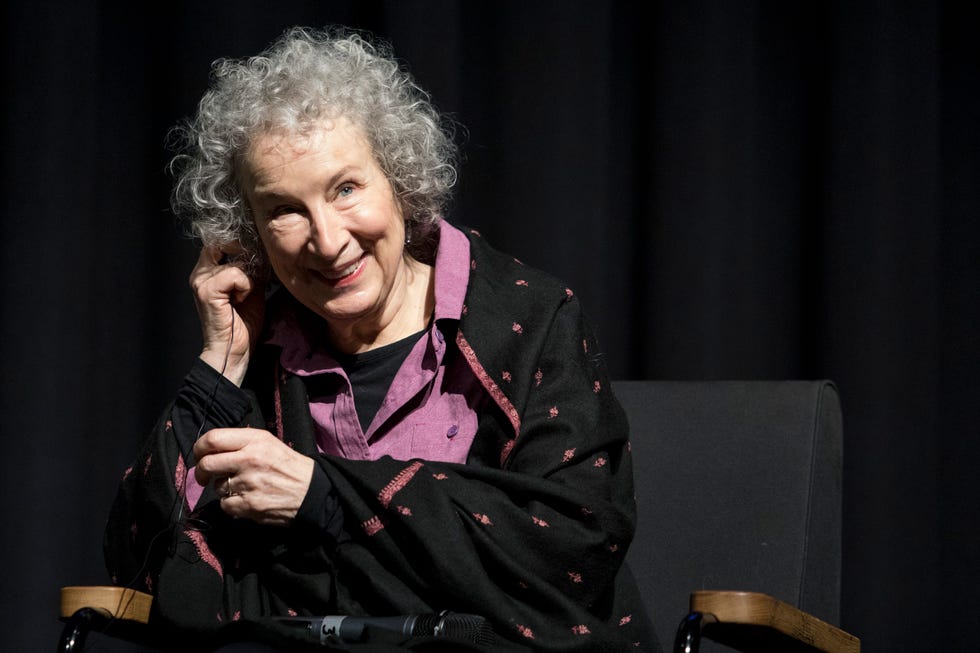
Although the dystopian future depicted in The Handmaid's Tale may seem unimaginable in the real world, Atwood said that while writing the book, she made a point to stay true to the kinds of atrocities humans had historically committed against one another. "I made a rule for myself: I would not include anything that human beings had not already done in some other place or time, or for which the technology did not already exist," she wrote in a 2012 essay for The Guardian. "I did not wish to be accused of dark, twisted inventions, or of misrepresenting the human potential for deplorable behavior."
Offred's room is designed to highlight the life she's lost.
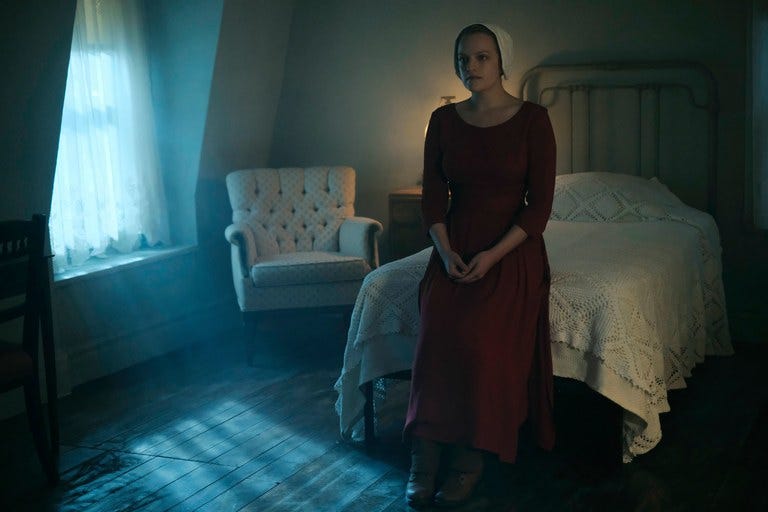
In an interview with Architectural Digest, the show's production designer, Julie Berghoff, explained that Offred's room reflects the life she no longer has. "We put a desk there, but she can't write," Berghoff said. "So it's almost like a remnant, a remembrance of 'Oh, I was a writer, an editor. I can't even sit and write anymore.'"
Elisabeth Moss films the show without makeup.
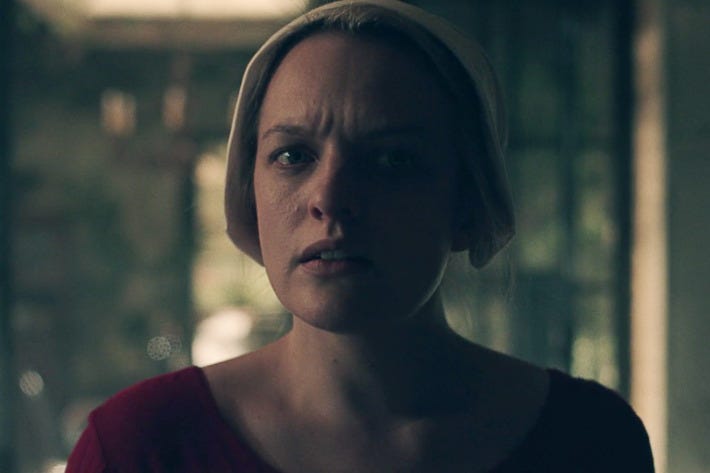
In an interview with Time, Moss and Atwood revealed that Moss films the series without makeup. "Bruce Miller, who is the showrunner and chief writer, said he felt that it allowed the acting to be more direct and because every little twitch and twinge was visible," Atwood explained. "There wasn’t anything between you and the camera." Moss added, "Absolutely. And same with if I went paler or if I flushed or if I was cold, you could really see it. And we also did very, very close shots."
The show has a Beyoncé connection.
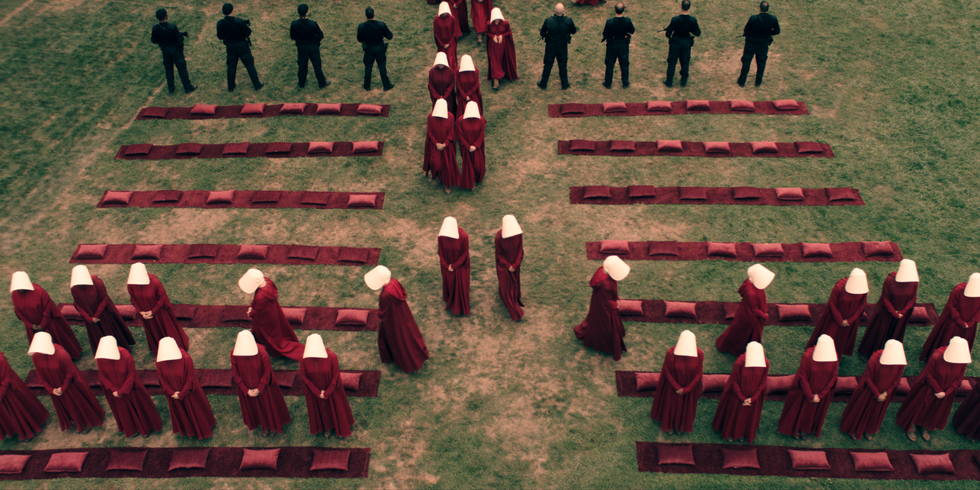
Reed Morano, who directed the first three episodes of Season 1 of The Handmaid's Tale, worked as a cinematographer on Beyoncé's Lemonade.
Atwood had a very specific reason for setting the story in America.

Even though Atwood herself is Canadian, she chose to set the story of The Handmaid's Tale in the United States because she didn't think Canada would believably "rollover for an extreme totalitarian regime." "I have to say the resistance to such a thing would be very strong in Quebec," she said in an interview with Teen Vogue. Canada has historically been the place you run away to. So that’s why you run away to it in The Handmaid’s Tale. People are running away to it right now, following an historic pattern."
The Commander and Serena Joy are art thieves.

If you've noticed that the Commander and Serena Joy have some very beautiful and very famous art on the walls of their house, know that those are not intended to be prints or reproductions. "We pretended like they went into the Boston Museum of Modern Art and stole all their favorite paintings," Berghoff told W. "Serena Joy is a watercolorist, and she loves nature, so she picked Monets."
Offred's real name is never revealed in the book.
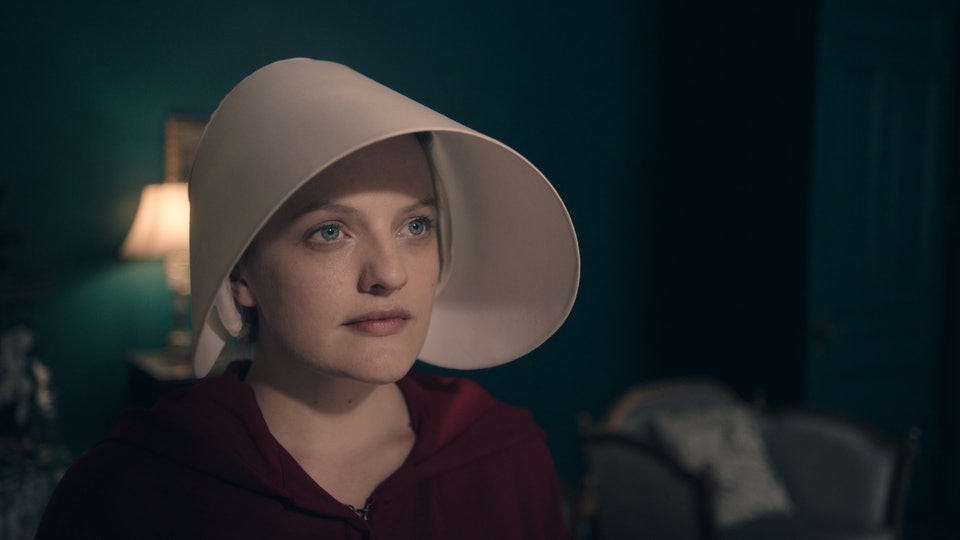
While the Hulu series explicitly reveals that Offred's real name is June, this isn't the case in the book, in which her real name is never revealed. There is a scene in the book that mentions the name "June," however, and many readers theorized that was Offred's name, which is why Hulu chose to use it. Atwood, for her part, has said that she didn't intend for Offred's name to be June, but that she has no problem with it being used as such.
Moira is white in the book.

In the book, all people of color are driven away to the Midwest by the racist regime in charge of Gilead. For the show, the producers didn't think it translated to the screen. Executive Producer Bruce Miller told TVLine that producers had "a huge discussion with Margaret Atwood" about the decision to change this detail. He explained that, on the page, “It’s easy to say ‘they sent off all the people of color,’ but seeing it all the time on a TV show is harder."
He added, “Also, honestly, what’s the difference between making a TV show about racists and making a racist TV show? Why would we be covering [Offred's story], rather than telling the story of the people of color who got sent off to Nebraska?"
Wiley spoke to Vanity Fair about fan reactions to the change. "You’ve got people who think it’s a wonderful idea, and that it’s going to be so cool, and then you’ve got people—I don’t know, let’s just call them 'purists'—who are not happy that the story has ‘changed,'" she said.
Emily's sexuality isn't addressed in the book.
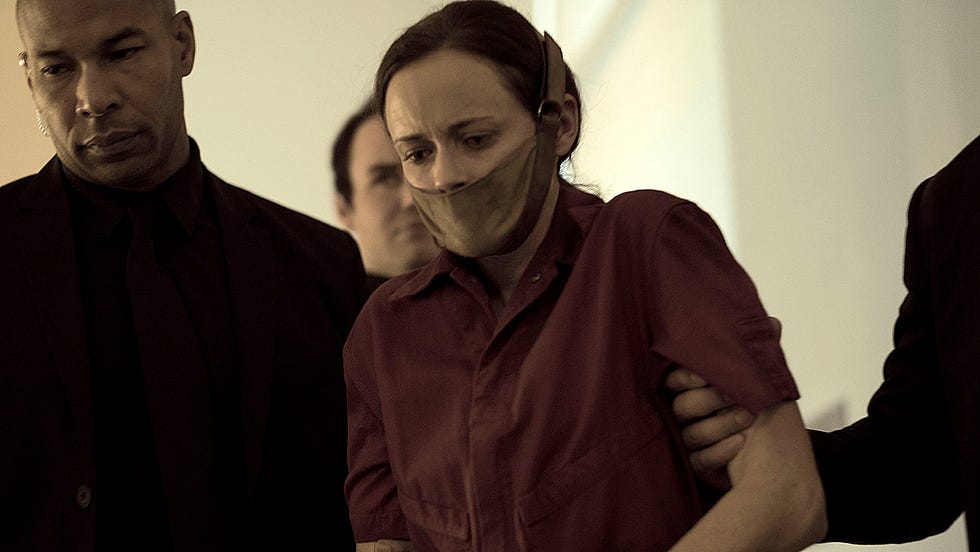
Another character who was changed in the TV version of the story was Emily, played by Alexis Bledel. Emily's sexual orientation and her marriage to another woman were added for the show, but Atwood says changes like that update the story and make it feel more relevant for modern audiences.
“It’s very 'now,'" she told Vanity Fair. "In the book, we don’t hear too much about [Ofglen]. In the series, she’s, number one, gay, [and] number two, she had a wife. You couldn’t have said that in 1985. It wouldn’t have made any sense. People weren’t talking that way. But they are now, so that makes sense."
The Commander and Serena Joy are much younger in the series than in the book.

Another big character change made for the TV adaptation was the age of the couple Offred stays with. In the book, the Commander and Serena Joy are very old. In the show, they're much younger. Executive producer Bruce Miller explained to TVLine that the decision was made to put Serena in "direct competition" with Offred. Just one more thing to add to how much it sucks to be a woman in Gilead.
The grocery store set was the hardest to create.
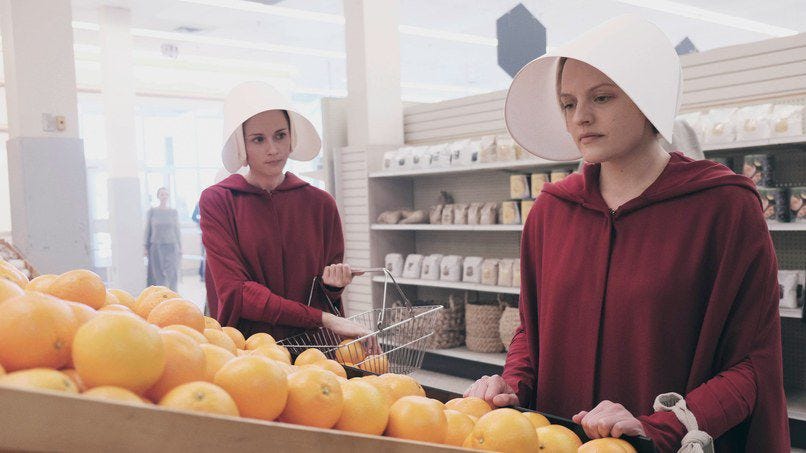
Because reading is outlawed in Gilead, all of the labels on the food in the store have to be pictographic, and the responsibility of creating those symbols fell to the production design team. "The grocery store was probably one of our hardest sets because we fabricated every single label there," Berghoff explained to Architectural Digest. "My graphics team painstakingly designed hundreds and hundreds of labels and then applied them to certain things."
It was also the creepiest set for some of the actors.
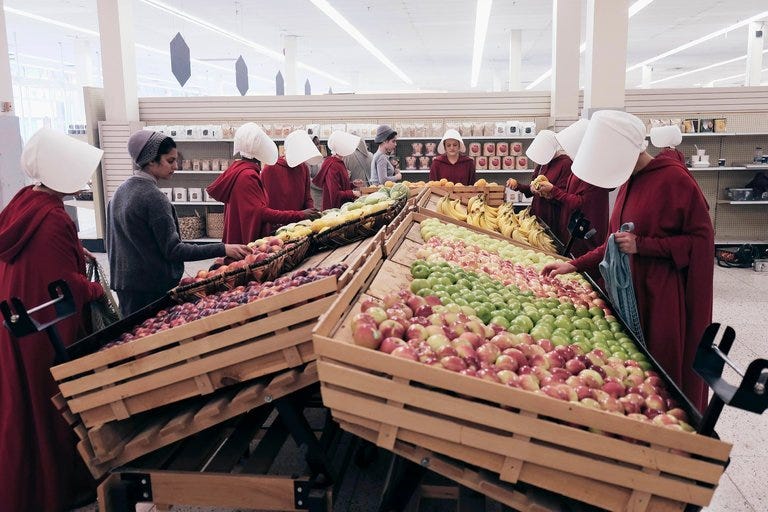
During an interview with Architectural Digest, Wiley said that the shopping scenes were some of the most unnerving to her simply because they remind viewers how modern the events of the series are.
"When they go shopping, it's not in some old-timey-looking place," she said. "It's in a shopping center that looks like now. And I think those details make it a little scarier; it's really in the world we are living in right now."
The Handmaids' outfits are red for several reasons.

In an essay for The New York Times, Atwood explained the symbolism of the Handmaids' red costumes. "The Handmaids wear red, from the blood of parturition, but also from Mary Magdalene," she wrote. "Also, red is easier to see if you happen to be fleeing."
The Wives' costumes are also symbolic.
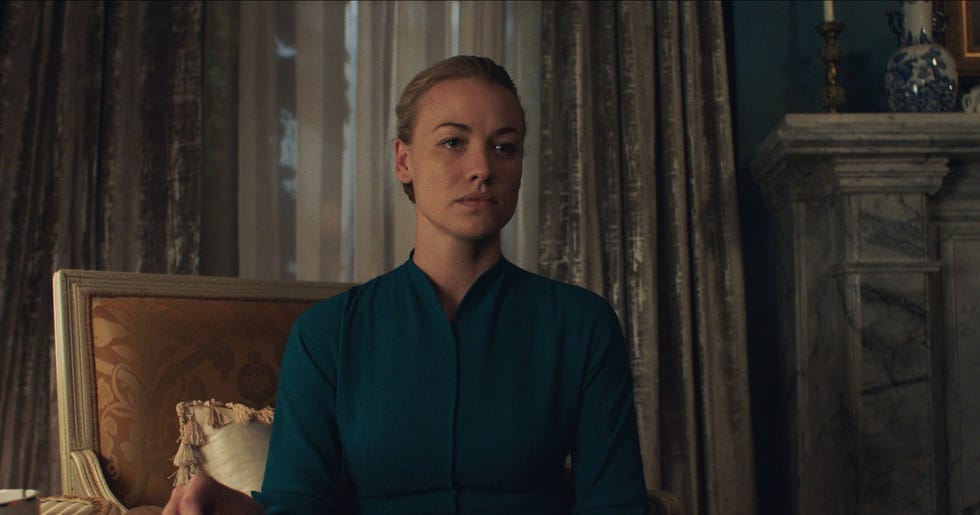
In the same NYT essay, Atwood explained that the Wives' costumes are all full of symbolism. "The Wives wear the blue of purity, from the Virgin Mary," she wrote.
The costume colors dictated the whole show's color palette.
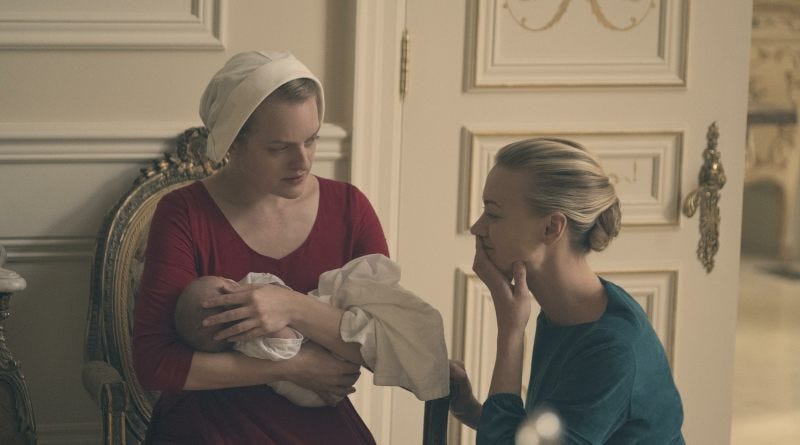
Berghoff said Offred's room was white, to evoke the feeling of a sanitarium, while Serena Joy's spaces are decorated in rich blues. "It was an opportunity to work with these beautiful colors in the caste system," Berghoff told Architectural Digest. "I basically almost designed each room specifically for that character."
Even Offred's name is symbolic.
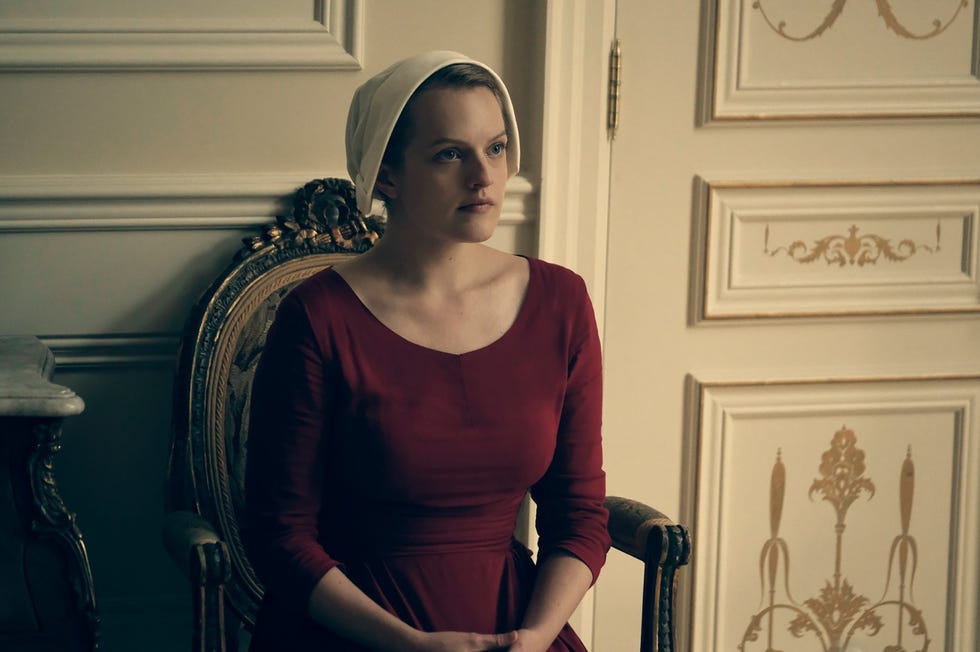
Speaking of the many, many layers of symbolism in the book and series, Offred's name is another of those layers. "This name is composed of a man’s first name, 'Fred,' and a prefix denoting 'belonging to,' so it is like 'de' in French or 'von' in German, or like the suffix 'son' in English last names like Williamson," Atwood explained in her very revealing NYT essay. "Within this name is concealed another possibility: 'offered,' denoting a religious offering or a victim offered for sacrifice."
The dystopia of The Handmaid's Tale is inspired by the Puritans.
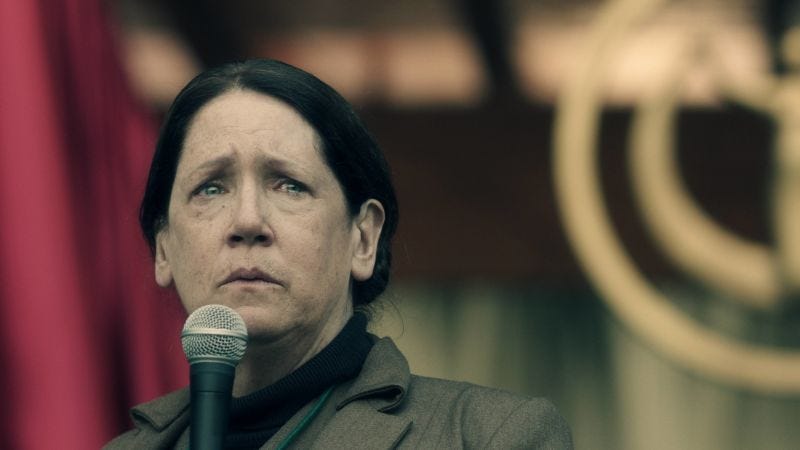
Atwood has said that the totalitarian government in The Handmaid's Tale is inspired by American Puritans. "Harvard gave my book a sniffy review in Harvard magazine," she said. "But one of the persons it's dedicated to is Perry Miller, through whom at Harvard I studied the American Puritans in great detail. The roots of totalitarianism in America are found, I discovered, in the theocracy of the 17th Century. The Scarlet Letter is not that far behind The Handmaid's Tale, my take on American Puritanism."
The title is a nod to another famous book.
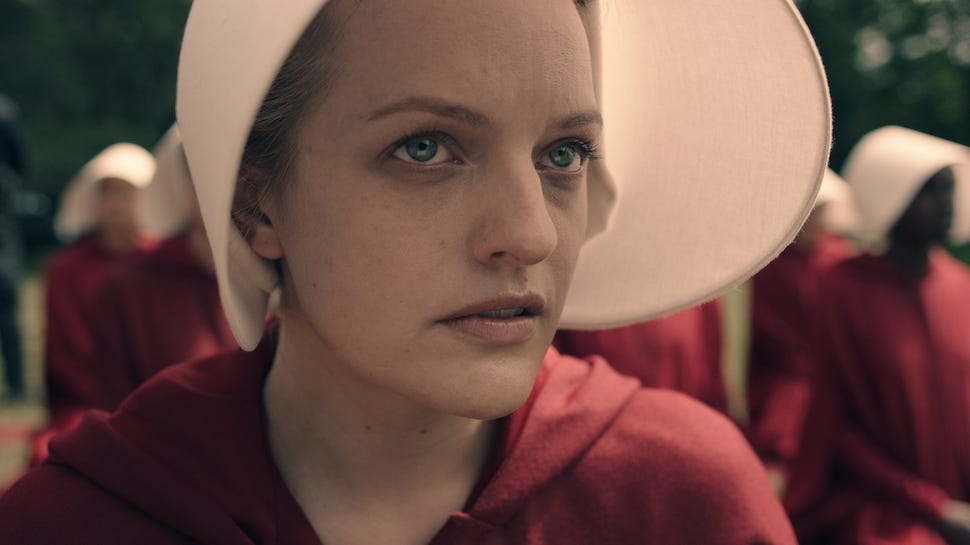
Atwood has confirmed that the book's original title was simply Offred—the name of the main character. While she was writing it, however, she decided to change course. "At some time during the writing, the novel’s name changed to The Handmaid’s Tale, partly in honor of Chaucer’s Canterbury Tales, but partly also in reference to fairy tales and folk tales: the story told by the central character partakes—for later or remote listeners—of the unbelievable, the fantastic, as do the stories told by those who have survived earth-shattering events," she explained.


Handmaid's Tale's Yvonne Strahovski Is Expecting
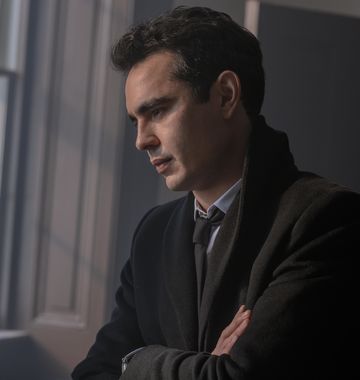
Max Minghella on the "Cathartic" Handmaid's Finale
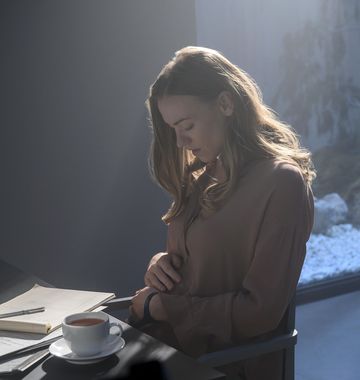
Yvonne Strahovski on What's "Terrifying" Serena
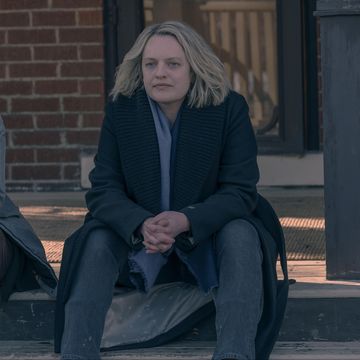
Where Will June Osborne Go Next?

